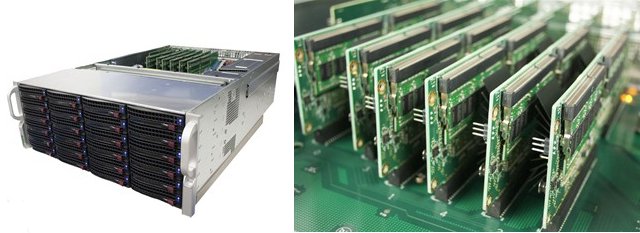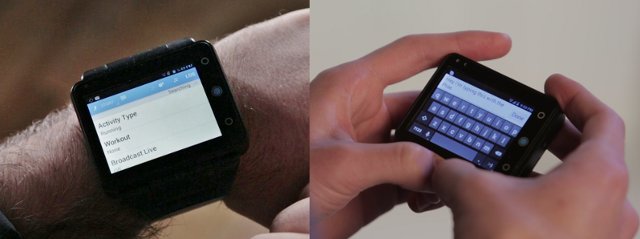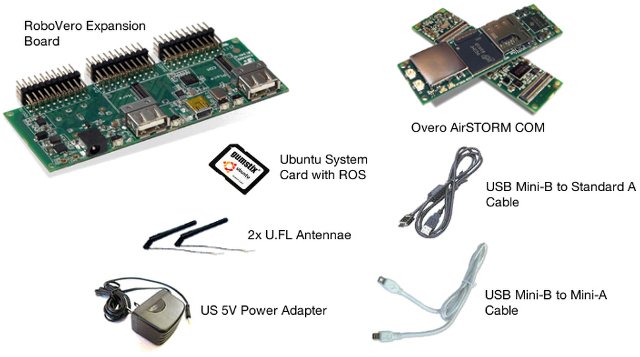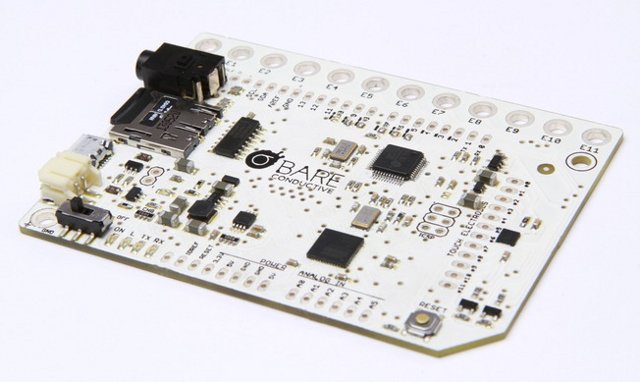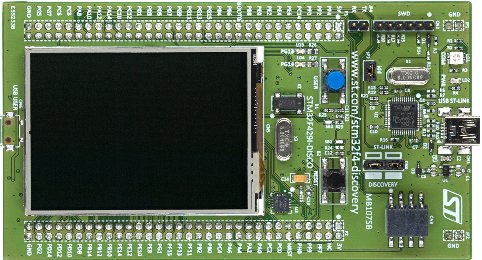Calxeda unveiled its new ECX-2000 Server-on-a-Chip (SoC) at ARM Techcon 2013. Calxeda new chipset features 4 cortex A15 cores, support up to 16GB RAM, and thanks to the move from Cortex A9 to Cortex A15 supports hardware virtualization. I’ve stumbled across two new servers powered by ECX-2000: Boston Viridis 2.0 and AAEON-CRS-200S-2R. Let’s have a look Boston Viridis 2.0 The successor of Boston Viridis powered by Calxeda ECX-1000 quad core Cortex A9 SoC, Viridis 2.0 features six ECX-2000 cards, with each card hosting two four-core SoCs @ 1.8GHz, and consuming as little as 6 watts of power. The server runs Ubuntu 13.10 operating systems, and OpenStack Havana platform, and would typically be used for cloud computing, distributed storage, and virtualization. Viridis 2.0 is a 4U ARM microserver that, and the company claims this can allow up to 1000+ servers in a rack, or about 1.5PB of data storage per rack. […]
Dual Tuner “Simple.TV by SiliconDust” DVR Runs Linux on Zenverge ZN200 SoC
“Simple.TV by SiliconDust” is the full name of a digital video recorder (DVR) featuring two tuners, one input supporting antenna (ASTC) and over-the-air cable (ClearQAM) connections, one Ethernet, and one USB 2.0 host port for external mass storage devices. The device, called HD Homerun on SiliconDust website, is powered by Zenverge ZN200 STB SoC, and runs Linux. This is an upgrade of Simple.TV 1, and it allows you to watch a channel, while recording another, or record 2 programs thanks to the 2 tuners. An app will also be available to watch recorded TV program on Android tablets (coming soon) or iPads, and there’s also an HTML5 client to watch TV in any compatible browser. Recorded shows can be watch from any location with Internet access if you have a Premier subscription. Simple.TV 2 specifications: SoC – Zenverge ZN200 STB SoC with a quad Stream HD Transcoder, audio processing engine, […]
Embedded Linux Conference Europe 2013 Videos and Presentation Slides
I uploaded several Embedded Linux Conference Europe videos in 2011 and 2012 that were hosted by Free Electrons and/or the Linux Foundation for download, but this year, it seems the Linux Foundation has discovered a new (to them) online video service called YouTube, and created a playlist with (for now) 18 sessions of ELCE 2013. I’ve embedded the playlist below starting with the “Status of Embedded Linux (2013)“, by Tim Bird, Sony Mobile which takes place every year, and is among the most popular presentations. Most of ELCE 2013 presentation slides are already available from eLinux.org. You can also have a look at the list of ELCE 2013 talks I featured before the event took place. [Update: I’ve just watched the Status of Embedded Linux video, and I though it may be interested to list the topics (and keywords) used for what has happened in embedded linux in the last […]
Neptune Pine SmartWatch Phone Powered by Snapdragon S4 Dual Core Processor
More and more companies are jumping on the smartwatch bandwagon. Neptune Computer, a Canadian based startup, has just launched a Kickstarter campaign for the Pine, a watchphone running Android 4.1.2, and featuring a Qualcomm Snapdragon S4 dual core SoC. On the surface it looks very similar to SGPAX S5 smartwatch which also features a dual core processor (Mediatek MT6577), and a SIM card slot, and runs Android 4.0. Neptune Pine, however, comes with features and improvements which may make the 3 to 4 month “kickstarter wait” worth it: a larger 2.4″ detachable screen, larger internal storage, dual camera support, a larger battery providing up to 5 days in standby mode, and an IP67 rating that certifies the device to be dustproof and waterproof at depth of less than 1 meter. Neptune Pine specifications: SoC – Qualcomm Snapdragon S4 Dual-Core Processor @ 1.2Ghz System Memory – 512 MB RAM Storage – […]
Qualcomm Unveils Snapdragon 805 Processor with Full 4K Support
Qualcomm has just announced their “next generation” Snapdragon 805 “Ultra HD” processor, part of the Snapdragon 800 family. The SoC supports video playback and capture, image and graphics processing on display supporting Ultra HD (aka 4K2K or 2160p) resolution. Snapdragon 805 features four Krait 450 core up to 2.5GHz, and an Adreno 420 GPU which is claimed to have 40% more graphics processing than its predecessor: Adreno 330. Snapdragon 805 key features: High performance – Krait 450 quad-core CPU @ 2.5 GHz per core, memory bandwidth support of up to 25.6 GB/second. High graphics performance and Ultra HD resolution – Adreno 420 GPU with support for hardware tessellation and geometry shaders, and 4K processing. Connectivity – Integration with either the Qualcomm Gobi MDM9x25 or the Gobi MDM9x35 modem (just announced too) for cellular connectivity. Gobi MDM9x25 support LTE Category 4 with peak data rates of up to 150Mbps, and the […]
Gumstix Announces Solution Kits for their CPU Modules and Boards
Gumstix has recently unveiled several solution kits featuring their Overo and DuoVero Computer-on-Modules (CoMs), Pepper single board computer, and several expansions boards, together with required accessories, and software packages, in order to help their customers getting started more easily. All these solutions are based on Texas Instruments OMAP3, OMAP4, and/or Sitara processors, and run Linux (Ubuntu or Yocto), and sometimes Android for the kits with displays. The solutions kits target 6 different types of applications and/or markets: Robotics Robotic Development Kit (Pictured above) with one Overo AirSTORM CoM (OMAP3703), and RoboVero expansion board. The kit is better suited for motor control applications. Mobile Robotic Development Kit with one Overo AirSTORM CoM, and Turtlecore expansion board to be used with iRobot Create. The kits ship with a Linaro (Ubuntu for Overo) system card and Robot Operating System (ROS) pre-installed. Handhelds 3.5″ Handheld Development Kit featuring Overo AirSTORM CoM with Alto35 cutomizable […]
Almost Anything Can Be A Touch Input with The Touch Board and Electric Paint
Bare Conductive, a British startup, has designed an Arduino Leonardo compatible board with 12 capacitive touch sensors called the Touch Board. You can basically use any conductive material as a touch sensor, but the company’s existing “electric paint” really makes the board come to life, and you can just draw circuit anywhere, be it on paper, your wall, cardboard, and create fun and useful applications. Touch Board specifications: MCU – Atmel ATMega32U4 Microprocessor @ 16 MHz with 32 KB of Flash Memory of which 4 KB is used for bootloader. External storage – MicroSD card slot I/Os: 20 digital I/O pins (3 used for Touch IC and 5 for MP3 IC – can be disabled) 7 PWM channels 12 analog input channels 12 Touch electrodes of which 8 can be configured as extra digital inputs or outputs with PWM capability. (via Freescale MPR121) Audio – Playback and MIDI support via […]
Free Online Courses & Workshops For ARM Cortex-M Microcontrollers
STMicroelectronics and Digikey are co-sponsoring an EE Times University online training course entitled “Fundamentals of Microcontrollers (MCUs): Hands-On Workshop”. The first two 45-minutes sessions will be theoretical and provide and overview of micro-controllers, and explain methods to select an MCU for a given project. The first 1,000 persons based in the US or Canada, who attended the first 2 sessions, will receive a free STM32F4 Discovery Board (ARM Cortex M4). The three next sessions, conveniently taking place about a week later, hopefully after you’ve received your board, will be an actual workshop with STM32F429 Discovery Board. Here’s the detailed schedule for the training: December 2, 2013, 12PM (Eastern Time) – Session 1 – Introduction to Microcontrollers Common microcontroller architectures Pipelining Peripherals: Timers, Communication, Analog December 3, 2013, 12PM (Eastern Time) – Session 2 – Selecting the Right Microcontroller 10 Steps to Selecting a microcontroller What to look for in a […]


